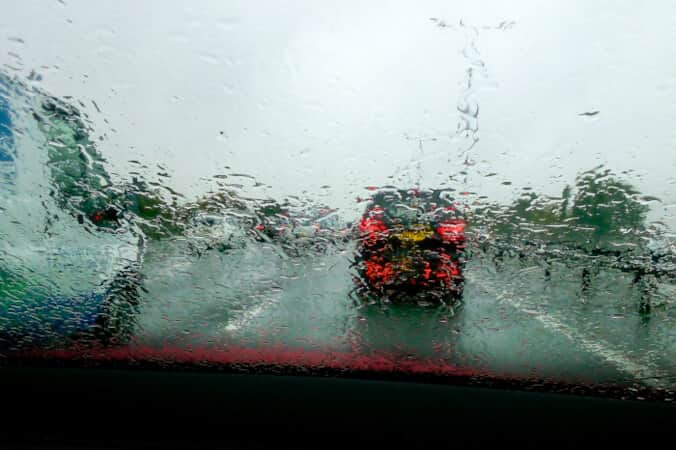For some driving in the rain is a stressful prospect, others don’t realise how different it is from normal conditions until they find themselves behind the wheel in a downpour. We’ve prepared some advice so that you can be safe when out on the roads.

Be prepared
Before you set off on your journey, check over your vehicle. These won’t take very long but will give you peace of mind that everything is working as it should. Make sure that your window wipers, brakes, and lights (including indicators) are all functioning correctly. You can also check the pressure of your tyres at most petrol stations and fill them up cheaply. This is always worth doing as traction will be essential in rainy conditions. You can check the tread depth of your tyres with a 20 pence piece. Place it into the main groove. If the tyre covers up the outer border of the coin, then the tread is deep enough and safe to drive. If the border is visible, then you may be approaching or have surpassed the legal minimum tread depth and your tyres will need to be replaced.
When on the road
It is vital when driving in the rain that you keep remain aware of everything around you. Drive slower than you normally would and remember to leave plenty of space between you and the car in front. Stopping distance doubles during rainy conditions so if you suddenly need hit the brakes, you’ll be grateful for the extra room. When you do need to slow down, avoid braking heavily. Rainy roads offer less traction so braking too suddenly may cause you to skid uncontrollably. Whenever you’re driving in the rain be aware of what is around you, especially larger vehicles like lorries as they throw up more spray from the road surface and their size makes them vulnerable to being moved by the wind. If you’re trying to overtake one on a motorway or dual carriageway, only do so if you have plenty of room and it is safe to do so. Keep a firm grip on the steering wheel so that you can quickly adjust in case of sudden wind or slick patches in the road. This will keep you safe and stable on your journey.
Driving at night in the rain
Driving in the dark while it’s raining brings some added risks. The reduced visibility makes it harder to see what is around you so you can react accordingly. Dipped headlights are best to illuminate the road ahead, as full beam or fog lights can reflect off the rainy tarmac and dazzle other road users. If you are in an area with no streetlights, consider using your full beams to give you a better view of the road. However, this is best avoided if there are other drivers nearby especially if they are directly in front of you or approaching from the opposite direction.
What you need to know about aquaplaning
Aquaplaning is when there is a build-up of water between your car’s tyres and the road surface that causes them to lose friction and for you to lose control of the vehicle. When aquaplaning you will find that steering or braking will become a lot more difficult. The best way to prevent aquaplaning in the first place is to reduce your speed in wet conditions to prevent the build-up of water. If your car begins to aquaplane the most important thing to do is remain calm. Slowly ease off the accelerator to let the vehicle slow down gradually. Avoid braking unless there is an immediate hazard as this can cause chaotic skidding and put you and other road users at risk.
Drive safely in a rented van from H&H Van Hire. You can rely on a vehicle from our modern fleet to get you there, whatever the weather. To book your van hire, get in touch with our team on 020 7916 6616 or send an email to vans@hhvanhire.co.uk.


